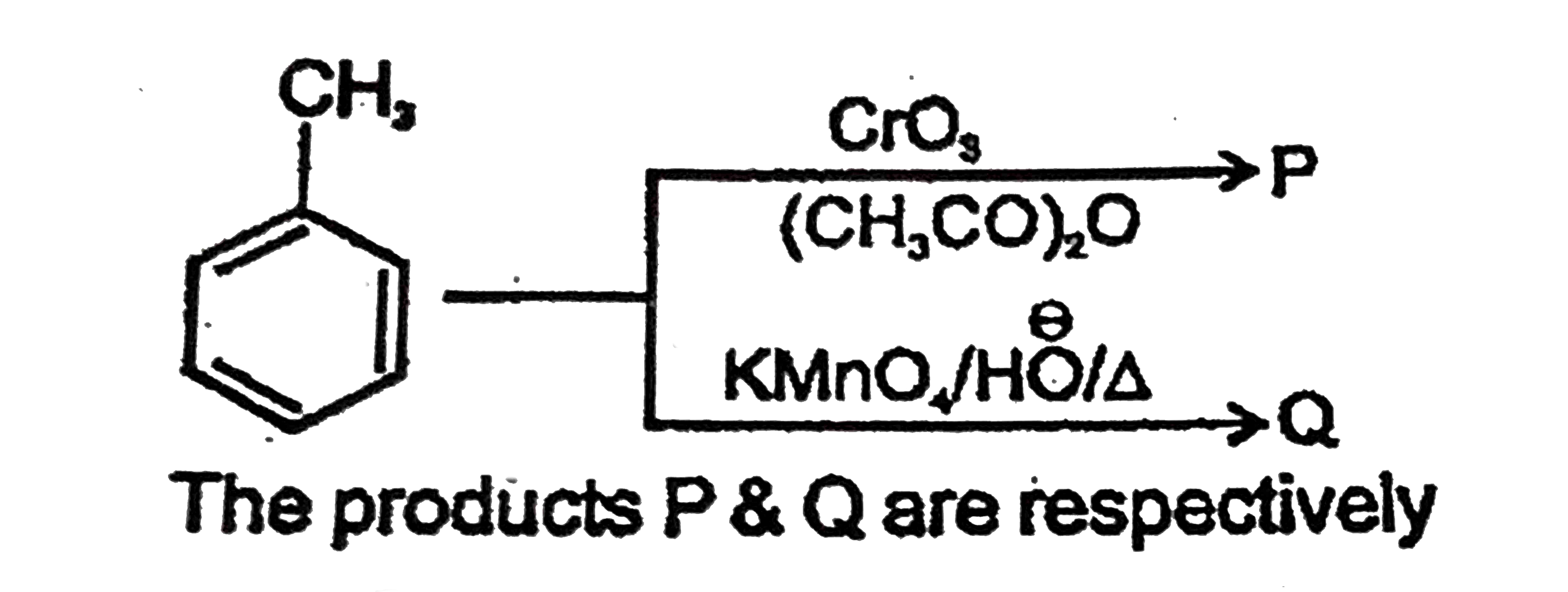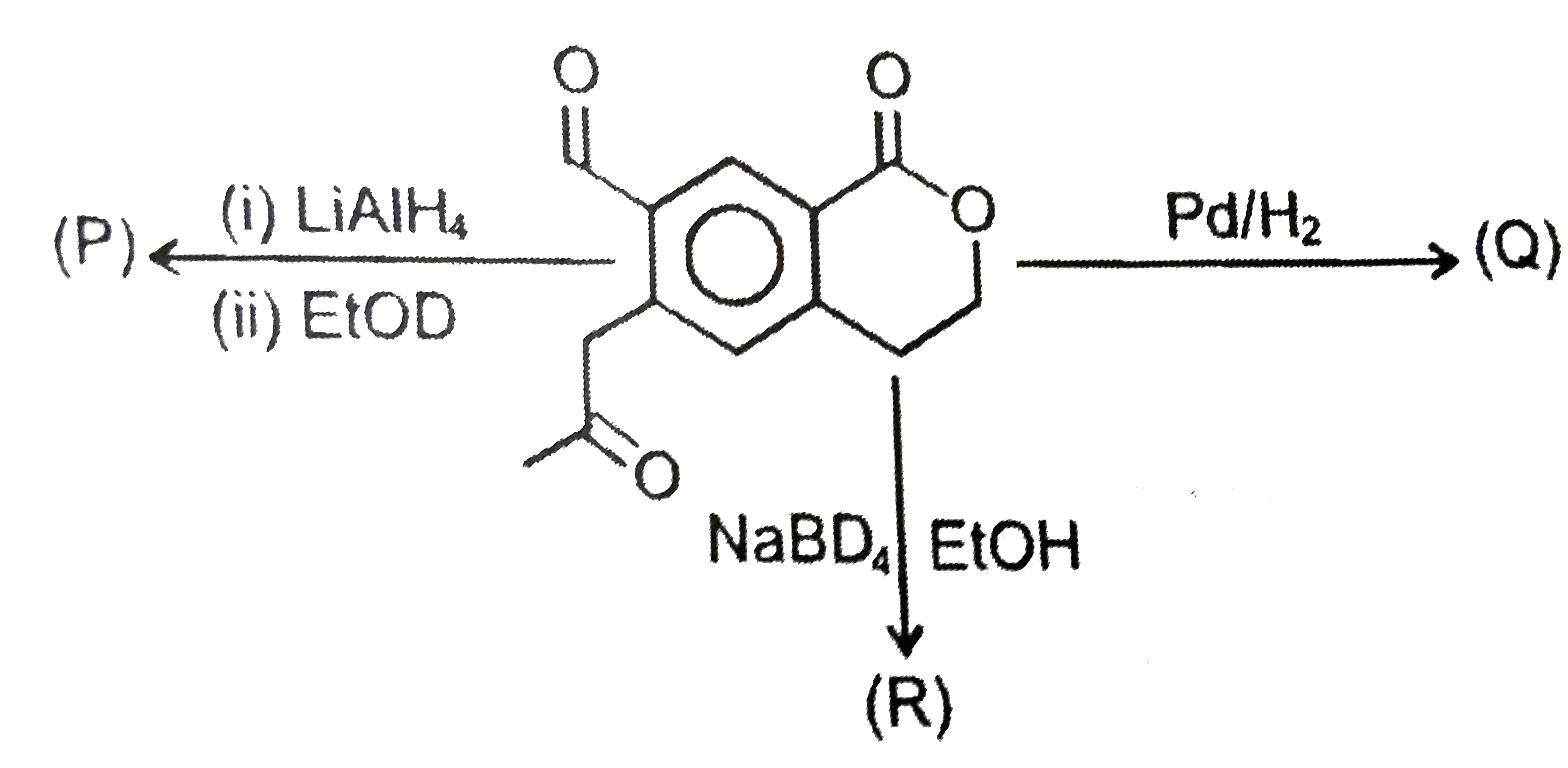 P and Q are respectively Solution in Telugu
P and Q are respectively Solution in Telugu




The correct Answer is:A
Topper's Solved these Questions
- BOOK - AAKASH SERIESCHAPTER - ALDEHYDES AND KETONESEXERCISE - LEVEL-II LECTURE SHEET (EXERCISE-II)28videos
ALDEHYDES AND KETONES
- BOOK - AAKASH SERIESCHAPTER - ALDEHYDES AND KETONESEXERCISE - LEVEL-II LECTURE SHEET (EXERCISE-III)11videos
ALDEHYDES AND KETONES
- BOOK - AAKASH SERIESCHAPTER - ALDEHYDES AND KETONESEXERCISE - LEVEL-I(EXERCISE-II)59videos
ALDEHYDES AND KETONES
- BOOK - AAKASH SERIESCHAPTER - ALCOHOLS, PHENOLS AND ETHERSEXERCISE - ETHERS (OBJECTIVE EXERCISE-4)50videos
ALCOHOLS, PHENOLS AND ETHERS
- BOOK - AAKASH SERIESCHAPTER - ALKYL AND ARYL HALIDESEXERCISE - OBJECTIVE EXERCISE - 4 (ASSERTION (A) & REASON (R) TYPE QUESTIONS)19videos
ALKYL AND ARYL HALIDES
Similar Questions
Which of the following give N- subtituted amide from ketoxime ?
09:25View SolutionAldehydes and ketons are susceptible to nuclephlic addition because carbonylgroup

Polar (due to electronegativeity difference between carbon and oxygen
positive charge on carbonyl compound towards nucleophilic . this addition is catalysed by acid . REactivity of carbonyl compound towards nuclephilic addotion increase with increase in teh electron deficiency at carbonyl carbon Thus (-I.E ) groups increase while (+I.E ) groups decreases the reactivity of carbonyl compound .
which among the following is most reactive towards nuclephilic addition02:43View SolutionEthylene is converted to X on passing through a mixture of an acidified aqueous solution of palladium chloride and cupric chloride. Which of the following reagents readily take part in addition reaction with X ?
02:10View Solution(A): Alcoholic fermentation involves conversion of sugar into ethanol by the action of yeast.
(R): Fermentation involves the liberation of CO2 gas.View Solution(A) Towards SN2 reaction, order of reactivity is CH3Br>CH3CH2Br>(CH3)2CHBr>(CH3)3CBr.
(R) Greater the stability of carbocation, greater will be its ease of formation from alkyl halide and faster will be the rate of SN1 reaction.01:49View SolutionIf the pthandqth terms of a G.P. are qandp respectively, show that (p+q)th term is (qppq)1p−q .
04:16View Solution
The products P & Q are respectively02:13View Solution
P and Q respectively.01:59View Solution
(P) and (Q) respectively are03:49View SolutionIf (p∨q)and(p∧q) are both true, then the truth-values of p and q are respectively
08:39View Solutionयदि p→(q∨r)असत्य है तो p,q,r का सत्यमान क्रमशः है :
03:44View SolutionGiven 'p' and 'q' as true and 'r' as false, the truth values of ~p∧(q∨~r) and (p→q)∧r are respectively
07:03View SolutionIf p and q have truth value 'F', then the truth values of (~p∨q)↔~(p∧q) and p↔(p→~q) are respectively
01:25View SolutionIf p is true and q is false then the truth values of (p↔q)↔(~q→~p) and (~p∨q)∧(~q∨p) are respectively
02:07View SolutionProduct (P) and (Q) respectively is :
02:43View SolutionIf p and q are simple preface, then (~p^^q)vv(~q^^p) And is false, while p, q are respectively
03:18View Solution


